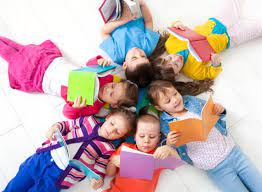Close reading is an effective and critical reading strategy for students trying to understand complex texts. Not only does it allow for a deeper understanding of the material, but it can also be one of the most fun lessons in their week! Combining analytical thinking, collaborative learning, and creative exploration, close reading makes dissecting even the most complicated passages an entertaining experience.
Learning with Laughter: Demystifying Complex Texts
Delving into dense texts can be daunting to many students. However, close reading techniques break down these complicated pieces into manageable chunks. By focusing on each section independently, students can examine the author’s intentions and choices as well as engage in a meaningful discussion of themes and underlying messages. This makes tackling challenging content not just accessible but enjoyable.
Interactivity and Collaboration: Building Connections through Discussion
Close reading naturally fosters collaboration among students. By working in groups or partnerships, students can share ideas and unravel intricacies within texts together. This social interaction presents various interpretations and perspectives that enrich the student’s understanding of complex texts while making the learning process more engaging and interactive.
Creativity Unleashed: Encouraging Innovation and Insight
Close reading promotes creativity as students explore symbolic meaning, figurative language, and various literary devices within texts. By encouraging unconventional viewpoints and fostering innovative ideas around these components, close reading allows students to appreciate the intricacies of literature on a new level.
Lessons Beyond the Classroom: Adapting Close Reading Strategies to Everyday Life
One of the greatest aspects of close reading is that it extends beyond academic work. These skills are transferable to other areas of life – including news articles, popular culture, and opinion pieces – making students critical consumers of information as they navigate the world around them. Thus, this not only entertains but empowers them for success.
Making Learning Fun: Tips for Incorporating Close Reading into Classrooms
For educators looking to introduce the joy of close reading to their students, consider these tips:
1. Encourage active engagement: As you guide students through difficult texts, facilitate conversation and questioning to help them develop their analytical skills.
2. Use visualization techniques: Encourage students to create mental images or draw connections with the material to develop a richer understanding.
3. Foster a growth mindset: Frame close reading as an adventure and challenge, emphasizing the value of learning from difficulties and mistakes.
4. Use varied materials: Explore diverse topics and genres to pique interest in the texts being read.
In conclusion, close reading offers a unique learning experience for students, combining problem-solving skills, collaboration, and creativity with an enjoyable challenge. By integrating this approach into classrooms, educators can make reading a lively adventure and the highlight of any student’s week.





